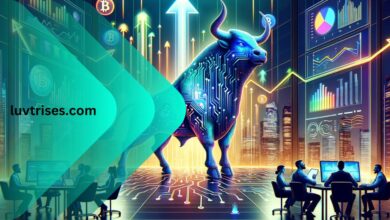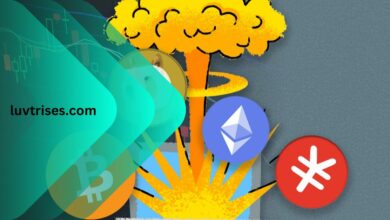Understanding Non-Fungible Tokens (NFTs): Digital Assets Redefining Ownership

Understanding Non-Fungible Tokens (NFTs): Digital Assets Redefining Ownership
In recent years, the world of digital assets has witnessed a revolutionary concept known as Non-Fungible Tokens (NFTs). These unique tokens have taken the digital world by storm, redefining the very essence of ownership in the virtual realm. Understanding Non-Fungible Tokens (NFTs) is crucial for anyone looking to delve into the world of blockchain technology and digital art. Let’s explore the fascinating world of NFTs and how they are reshaping the way we perceive ownership in the digital age.
What are Non-Fungible Tokens (NFTs)?
Non-Fungible Tokens (NFTs) are unique digital assets that represent ownership or proof of authenticity of a particular item or piece of content. Unlike cryptocurrencies such as Bitcoin or Ethereum, which are interchangeable and have the same value, NFTs are one-of-a-kind and cannot be replicated. Each NFT is stored on a blockchain, a decentralized digital ledger, which ensures the security and immutability of the token.
How Do NFTs Work?
NFTs operate on blockchain technology, which provides a transparent and secure way to verify ownership and authenticity. When an NFT is created, it is assigned a unique identifier that distinguishes it from any other token. This identifier is stored on the blockchain, along with information about the digital asset it represents. This information includes details such as the creator of the asset, its provenance, and any associated metadata.
The Rise of NFTs in the Art World
One of the most prominent applications of NFTs is in the art world, where they have revolutionized the way digital art is bought and sold. Artists can create digital artworks and mint them as NFTs, allowing collectors to purchase and own the original piece. This has opened up new opportunities for artists to monetize their work and reach a global audience without the need for traditional art galleries or intermediaries.
Investing in NFTs: Opportunities and Risks
The growing popularity of NFTs has attracted investors looking to capitalize on the potential value of these digital assets. While investing in NFTs can be lucrative, it also comes with risks such as market volatility, regulatory uncertainties, and the potential for fraud. It is essential for investors to conduct thorough research and due diligence before diving into the world of NFT investments.
NFTs Beyond Art: Real-World Applications
Apart from the art world, NFTs have found applications in various industries, including gaming, music, collectibles, and even real estate. Companies are exploring innovative ways to leverage NFTs to create unique digital experiences, reward customer loyalty, and establish verifiable ownership of physical assets through tokenization.
Legal and Ethical Considerations of NFTs
As NFTs continue to gain traction, legal and ethical considerations surrounding intellectual property rights, copyright infringement, and ownership disputes have come to the forefront. It is essential for creators, buyers, and platforms facilitating NFT transactions to adhere to legal frameworks and ethical standards to ensure a fair and transparent marketplace.
The Environmental Impact of NFTs
The energy consumption associated with blockchain technology, particularly in the case of Proof of Work (PoW) consensus mechanisms, has raised concerns about the environmental impact of NFTs. Artists and platforms are exploring more sustainable alternatives, such as Proof of Stake (PoS) or environmentally friendly blockchains, to mitigate the carbon footprint of NFT transactions.
Securing Your NFTs: Best Practices
Protecting your NFT assets from theft, hacking, or unauthorized access is paramount in the digital landscape. Implementing robust security measures, such as using hardware wallets, multi-factor authentication, and secure storage solutions, can help safeguard your NFT investments and ensure the integrity of your digital assets.
Regulatory Landscape and Future Outlook
The regulatory landscape surrounding NFTs is still evolving, with policymakers and regulators grappling with the challenges of overseeing this nascent industry. As governments around the world explore ways to regulate NFTs, it is crucial for stakeholders to stay informed about the changing regulatory environment and adapt to compliance requirements to ensure the legitimacy and sustainability of the NFT market.
FAQs
1. What makes NFTs unique compared to traditional cryptocurrencies?
NFTs are unique digital assets that represent ownership of a specific item or piece of content, whereas traditional cryptocurrencies are fungible and interchangeable.



